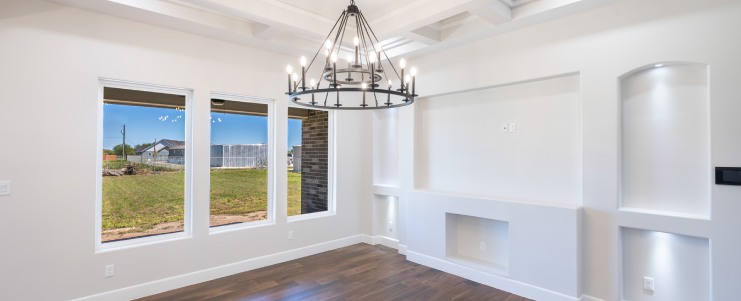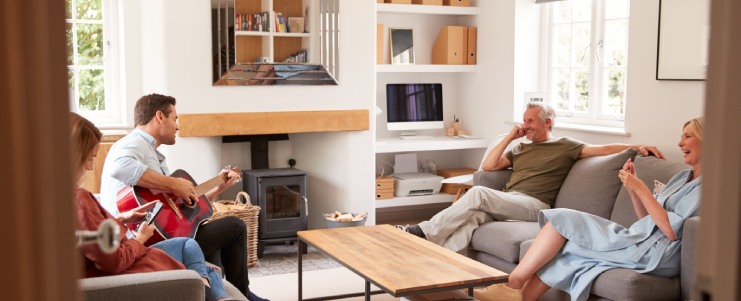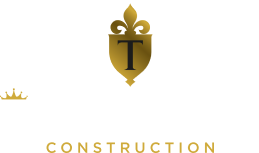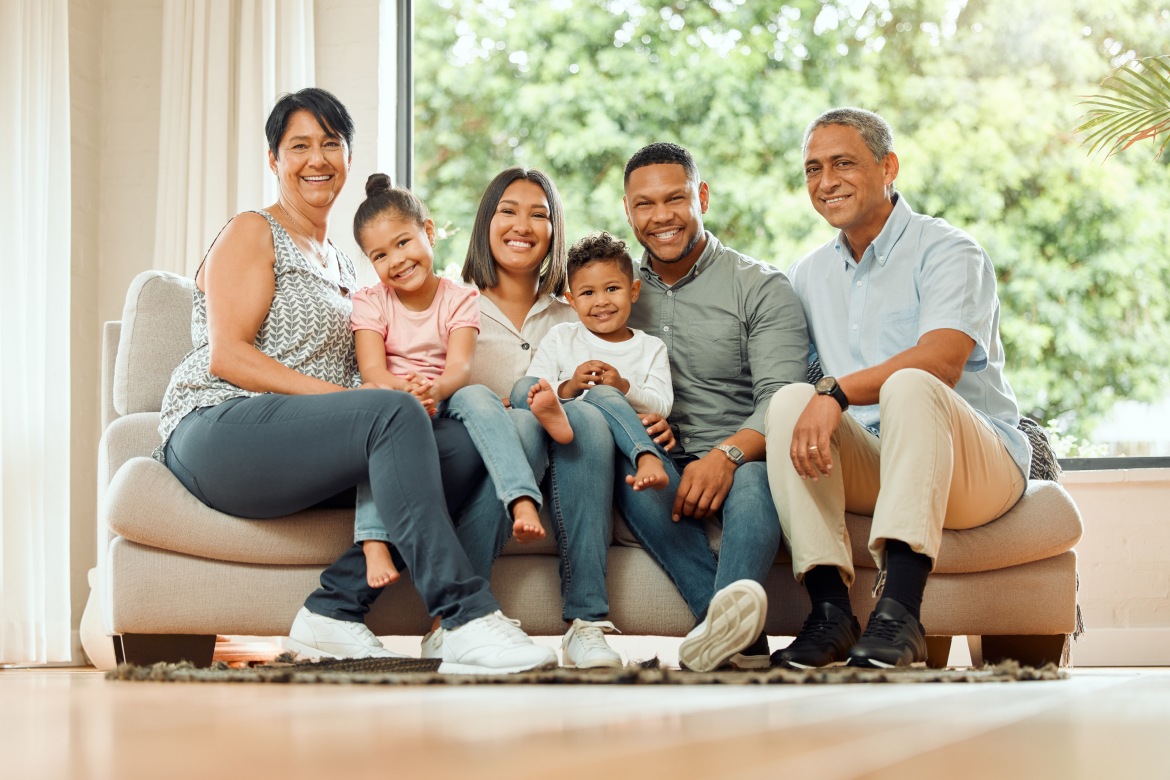In recent times, there has been a notable shift in living arrangements in families. Pew research revealed that a quarter of all adults between 25 and 34 years of age now live in a multigenerational living situation.
Multigenerational living involves many generations of the family, such as grandparents, parents, and children, staying under one roof.
Changes in population demographics, economic factors, and socio-cultural values have made multigenerational living increasingly common.
This change brought about not only a change in family structure and dynamics but also the shape and design of homes. With everyone living in close proximity, it is essential to design a home in a way that ensures harmony, connectivity, and privacy.
So, if you are considering living in a multigenerational custom home, this article digs deeper into its importance, design considerations, best practices, and more. Read on to find out.

What is the Significance of a Multigenerational Home?
A custom multigenerational home gives you the liberty to design your living space in a way that suits your family members and your personal needs.
With proper and practical designs, careful planning of your multigenerational home can be perfect to accommodate all the different personalities and characters of the generations that are living together.
A well-thought-out design will create a living space that is comfortable, functional, and supportive.
For example,
- Senior citizens would require grab bars in the bathrooms and stairs, or even wheelchair accessibility, as well as large doorways to accommodate them.
- Children will require a dedicated play area for them to free creative.
- Young adults will need private spaces for studying, working remotely and unwinding with friends.
- Moreover, shared spaces should also be designed in a way that creates room for interaction and connectivity without feeling restrictive.
You don’t need an overly large house to live comfortably in a multigenerational home, but enough space is essential to make the house feel a sense of openness. Therefore, the key factors to making a multigenerational home a success are its size and layout.
Unique Options for a Customised Multigenerational Home
Designing a custom home in Rio Grande Valley with multigenerational living in mind offers various options, such as incorporating a casita or an in-law suite.
Tiny houses and apartments above garages with private entrances are also popular choices, providing family members with privacy and independence while staying close to each other. However, in some cases, adding extra structures may not be feasible, which calls for alternative solutions. AARP recommends converting a garage, rebuilding a basement, and using the unused attic space if you are running out of space.
Additionally, homes can be designed with separate living areas for different generations, ensuring flexibility for future needs. Collaborating with a custom home builder will bring about the creation of a comfortable and cohesive multigenerational living environment designed specifically to the family’s requirements.
Some living options for a multigenerational home are:
- Dual-Key Home: This home involves two separate living spaces with different entrances under one roof. This is perfect for families that want privacy while living together.
- Attached Home: A second house attached to the main one can also provide independence while living in close proximity.
- Granny Flats: These are self-contained living spaces that are built on the same property as the main house. These houses best suit elderly parents or adult children who want privacy.
- Two-Story Home: Separate living spaces on each floor can accommodate multiple generations under one roof. This is an ideal situation for different generations to live together in one house.

Features of Multigenerational Custom Homes
Multigenerational homes offer unique features that cannot be found in any other type of house. These special features that are incorporated in a home where people of different generations live are:
1. Functional design
One of the key features of a multigenerational home is creating a functional design that meets the needs of all family members. This includes considering certain factors such as accessibility, safety, and ease of navigation for senior citizens or those with special abilities.
Moreover, adding flexible living spaces that can adapt to changing family dynamics is a plus point. For example, a separate attached home or living area for grandparents may give them privacy and independence while still being able to interact with other family members frequently.
2. Private and shared spaces
With a multigenerational home, there is a need to balance the need for privacy with ample opportunity for shared activities. Allowing each family unit its own private living areas, such as bedrooms and bathrooms, will ensure that everyone has their own space to retreat and relax.
At the same time, shared living spaces such as a spacious kitchen, dining area, or family room will give room for bonding and social interaction among family members. You can also consider adding outdoor living areas or communal gardens where family members can get together for outdoor activities or meals.
3. Separate entrances and living areas
Providing different entrances and living areas for different generations can help maintain a sense of independence within the household. This allows each family unit to come and go as they please without disturbing other members of the household.

4. Flexible use of space
Designing the space and layout is key for multigenerational living. Spaces that can serve multiple functions and adapt to changing needs over time give families the flexibility to make the most of their living areas.
You can consider adding features like movable partitions, fold-down beds, or convertible furniture. This versatility ensures that the home can grow and evolve along with the family.
5. Emphasis on connection
While privacy and independence are important, it’s also essential to create areas for connection and bonding among family members. Add features such as open floor plans, communal gathering spaces, and outdoor living areas to create a sense of togetherness within the household.
6. Integration of technology
Adding advanced technology features into the home can enhance its convenience, safety, and connectivity for multigenerational families. Smart home features such as programmable thermostats, home security systems, and voice-activated assistants can help improve the overall quality and comfort of life.
7. Environmental considerations
With the threat of climate change looming large, building sustainable and energy-efficient homes will not only reduce the environmental impact but also provide long-term cost savings. Having features such as solar panels, energy-efficient appliances, and high-performance insulation can also significantly reduce utility bills.
Additionally, using eco-friendly building materials and design strategies can contribute to a healthier indoor environment and minimize the home’s carbon footprint.
8. Community amenities and services
An important aspect of multigenerational living is its surrounding community and available amenities. There is an added advantage if you live close to essential services such as healthcare facilities, schools, grocery stores, and recreational opportunities that can enhance your quality of life.
Additionally, access to public transportation and community spaces such as parks, libraries, and community centers can provide opportunities for socialization and engagement with a wider community.
9. Future planning
Finally, when building homes for multigenerational living, it’s important to think long-term and plan for future needs. Features such as universal design principles, aging-in-place modifications, and adaptable spaces can help ensure that the home remains functional and comfortable when family members age or life changes.
Considering the cost of building a custom home in RGV, multigenerational homes are cost-effective as they facilitate multiple generations to live under a single roof.

Build Your Multigenerational Custom Home With Us!
Trevino Construction understands that building homes for a multigenerational home requires thoughtful planning along with a focus on creating spaces that promote harmony, privacy, and connection.
By adding functional design elements, accessibility features, flexible living spaces, and opportunities for growth and change, multigenerational homes can provide a supportive and nurturing environment for families of all ages and backgrounds.
So, if you want to convert your custom home to support multigenerational living or build one from scratch, Trevino Construction is here to help. We are one of the leading luxury custom home builders known for our state-of-the-art ideas and execution. Our homes blend privacy and communal spaces, offering adaptable layouts for comfort and functionality. Contact us today to learn more.

